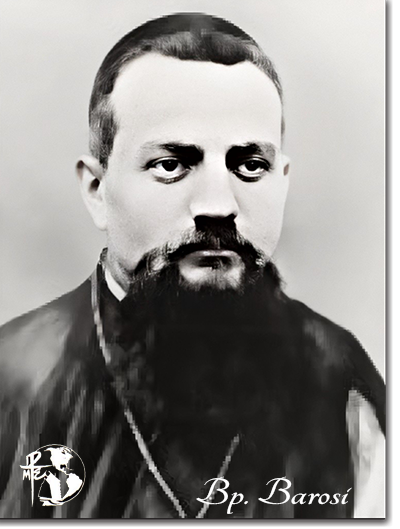

Kaifeng - June 1938 to December 1941
The fighting moved on to other areas and Kaifeng was an "occupied" city. We, as Americans, were in favor with the Japanese who at this stage were still trying desperately to keep good relations with the U. S. We turned our attention to our building plans. Also the workmen of Kaifeng needed work desperately, and if we built we could be supporting people who otherwise we would have to help through relief. It was better, we thought, to help them keep their self-respect by giving them work. Since in those days everything, just everything, was done by hand many workers would be needed. The wages paid these men seemed pitiful by American standards, but they were the official day by day wages specified by the masons' guild and the carpenters' guild for skilled workmen and for assisting coolies. And above all, the men could feed their families. So we felt that our building program was also a relief program in many respects.
 After his appointment, Msgr. Barosi made a visitation of all the mission stations of the vicariate. In early November he went down into the county of Liu-I. He visited one mission station and to this station came the pastors of two other stations to escort him to their stations. The pastor of the station then being visited decided to accompany them, and so the four, together with the Vicar's personal servant, set out for Ting Tsun. This was a small Village in no-man's land, between the Japanese and Chinese lines. Arriving at the station they were greeted by the Christians. In the church a Te Deum was sung and the vicar-elect spoke to the people. Dinner was then served. During this meal there suddenly appeared sixteen men in soldiers' uniforms, one in an officer's uniform. All Christians were ordered out and the gates were closed. The bishop's servant was told that because he was Chinese they had no intention of harming him. He was accordingly bound and placed in the sacristy from which he later managed to escape. What little we know of what followed was learned from him. In the church proper the vicar-elect and the three priests were bound and gagged. The mission buildings were looted and left in disorder. The four priests were beaten and then killed. Toward evening the intruders left, but the mission gate was still closed. The Christians then forced their way in. At first they could find no trace of their pastor and the others. Then the bodies were discovered in the well.
After his appointment, Msgr. Barosi made a visitation of all the mission stations of the vicariate. In early November he went down into the county of Liu-I. He visited one mission station and to this station came the pastors of two other stations to escort him to their stations. The pastor of the station then being visited decided to accompany them, and so the four, together with the Vicar's personal servant, set out for Ting Tsun. This was a small Village in no-man's land, between the Japanese and Chinese lines. Arriving at the station they were greeted by the Christians. In the church a Te Deum was sung and the vicar-elect spoke to the people. Dinner was then served. During this meal there suddenly appeared sixteen men in soldiers' uniforms, one in an officer's uniform. All Christians were ordered out and the gates were closed. The bishop's servant was told that because he was Chinese they had no intention of harming him. He was accordingly bound and placed in the sacristy from which he later managed to escape. What little we know of what followed was learned from him. In the church proper the vicar-elect and the three priests were bound and gagged. The mission buildings were looted and left in disorder. The four priests were beaten and then killed. Toward evening the intruders left, but the mission gate was still closed. The Christians then forced their way in. At first they could find no trace of their pastor and the others. Then the bodies were discovered in the well.